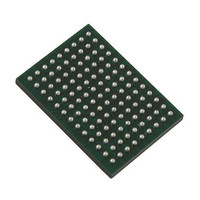VSC8211XVW Vitesse Semiconductor Corp, VSC8211XVW Datasheet - Page 60

VSC8211XVW
Manufacturer Part Number
VSC8211XVW
Description
IC PHY 10/100/1000 SGL 117-LBGA
Manufacturer
Vitesse Semiconductor Corp
Type
PHY Transceiverr
Specifications of VSC8211XVW
Number Of Drivers/receivers
1/1
Protocol
Gigabit Ethernet
Voltage - Supply
3 V ~ 3.6 V
Mounting Type
Surface Mount
Package / Case
117-LBGA
Case
BGA
Dc
07+
Lead Free Status / RoHS Status
Lead free / RoHS Compliant
Other names
907-1023
Available stocks
Company
Part Number
Manufacturer
Quantity
Price
Company:
Part Number:
VSC8211XVW
Manufacturer:
VITESSE
Quantity:
5
Company:
Part Number:
VSC8211XVW
Manufacturer:
Semtech
Quantity:
3 413
Company:
Part Number:
VSC8211XVW
Manufacturer:
VITESSE
Quantity:
648
Company:
Part Number:
VSC8211XVW
Manufacturer:
Vitesse Semiconductor Corporation
Quantity:
10 000
Part Number:
VSC8211XVW
Manufacturer:
VITESSE
Quantity:
20 000
16 Enhanced ActiPHY Power Management
In addition to the IEEE-specified power-down control bit
power management mode. This mode enables support for power-sensitive applications such as laptop computers with Wake-
on-LAN™ capability. It utilizes a signal-detect function that monitors the media interface for the presence of a link to determine
when to automatically power-down the PHY. The Station Manager is in control of this mode. The PHY then ‘wakes up’ at a
programmable interval and attempts to ‘wake-up’ the link partner PHY by sending either a fast link pulse (FLP) over copper
media or a Clause 37 restart signal over optical media.
The Enhanced ActiPHY™ power management mode can be set at startup (Refer to
CMODE Pins"
28.6.
16.1 Operation in Enhanced ActiPHY Mode
There are three PHY operating states when Enhanced ActiPHY
The PHY switches between the low power state and LP wake up state at a programmable rate (sleep timer) until signal energy
has been detected on the media interface pins. When signal energy is detected, the PHY enters the normal operating state.
When the PHY is in the normal operating state and link is lost, the PHY returns to the low power state after the link status time-
out timer has expired. After reset, the PHY enters the low power state.
When autonegotiation is enabled in the PHY, the ActiPHY
is disabled and the link forced to 10BT or 100BTX modes while the PHY is in the low power state, the PHY continues to
transition between the low power and LP Wake up states until signal energy is detected on the media pins. At that time, the PHY
transitions to the normal operating state and stays in that state even when the link is dropped. If autonegotiation is disabled
while the PHY is in the normal operation state, the PHY stays in that state when the link is dropped and does not transition back
to the low power state.
VMDS-10105 Revision 4.1
October 2006
• Low power state
• LP Wake up state
• Normal operating state (link up state)
and
Section 20: "EEPROM Interface"
Restart signal sent
FLP or Clause 37
LP Wake-up State
Figure 29. Enhanced ActiPHY State Diagram
Sleep timer expires
Low Power State
for details) or at any time during normal operation by writing to
(MII Register
TM
60 of 165
state machine will operate as described above. If autonegotiation
Timeout timer expires and
Auto-negotiation enabled
TM
mode is enabled:
0.11), the VSC8211 implements an Enhanced ActiPHY™
Signal Energy Detect on
Media (CAT5 or Fiber)
Section 19: "Hardware Configuration Using
Normal Operation
MII Register
Datasheet
VSC8211















